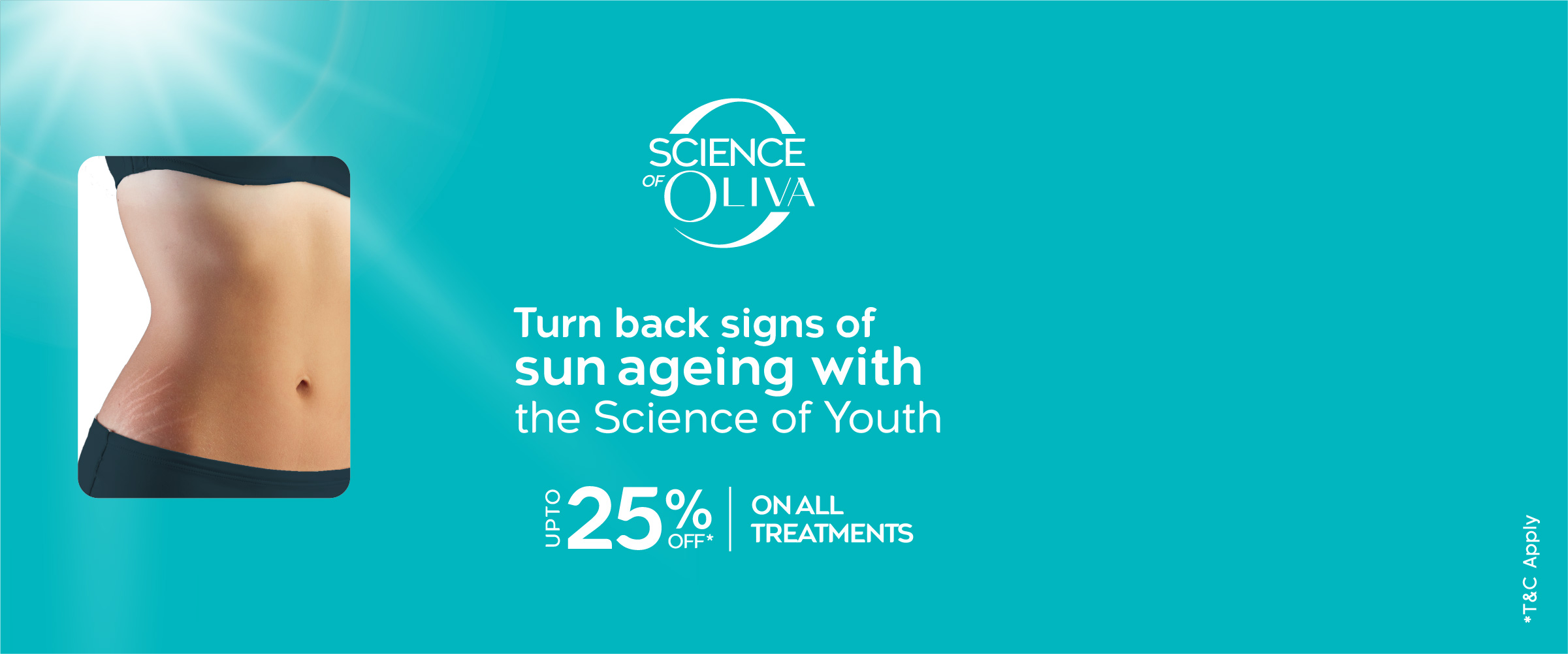Stretch Marks: Causes, Treatments And Management
Highlights
- ● Stretch marks, or striae, are commonly seen in adolescents going through puberty, pregnant women, and obese adults.
- ● Stretch marks appear due to the stretching of the skin and are form on the abdomen, glutes and thighs.
- ● Stretch marks are usually harmless, but in exceptional cases, they may indicate an underlying ailment.
- ● Older stretch marks are more difficult to lighten; therefore, we recommend treatment at the earliest. Lasers and Microneedling Radio Frequency (MNRF) have proven to be effective.
What Are Stretch Marks?
Stretch marks or striae, are white or pink coloured linear scars that develop on the skin when it gets stretched beyond its normal elasticity, causing the supportive collagen and elastin beneath to rupture. The consequent healing process results in the appearance of stretch marks. Stretch marks commonly form on the shoulders, abdomen, calves, hips and thighs. They might reduce gradually, but do not disappear completely.
Types of Stretch Marks:
Based on their formation and appearance, there are two types of stretch marks:
- Striae Rubrae: Striae Rubrae are stretch marks in their initial stages of formation. They are faintly raised red, vein-like, and linear lesions. These fade over several months, or even year, to whitish striae.
- Striae Albae: These are white, creased, depressed stretch marks that are more or less permanent. Furthermore, based on their appearance, they are classified as Stria Atrophicans, Striae Enigrae, Striae Caerulea, and Striae Gravidarum.
Other classifications when it comes to types of stretch marks:
- Striae Atrophicans: Stretch marks associated with thin skin are called Striae Atrophicans. They can be seen in medical conditions like Cushing’s Syndrome or during the extensive use of corticosteroids.
- Stria Nigra: Usually associated with darker skin types, these kinds of stretch marks are dark grey or black.
- Striae Caerulea: These are dark blue-purplish stretch marks common with darker complexions.
- Striae Gravidarum: Pregnancy-related stretch marks.
What Causes Stretch Marks On Body?
Here are some common reasons for stretch marks on body:
- Growth During puberty – About 6%-86% of people are likely to experience stretch marks during puberty.Adolescents notice light pink or light to dark brown striae on their thighs, breasts and back due to growth spurts.
- Obesity – Approximately 43% of people experience them due to rapid weight gain.Weight gain stretches the skin, resulting in the rupture of underlying dermal tissue, giving way to unsightly stretch marks.
- Pregnancy – Pregnancy is found to be the most common cause as nearly 43-88% pregnant women are found to have stretch marks.The weight gain during pregnancy causes massive stretching and itchy stretch marks, majorly on the abdomen. Research suggests that younger mothers are more susceptible to pregnancy-related stretch marks than older mothers.
- Hormonal Variations – Increased cortisone production from the adrenal glands promotes protein catabolism, which usually occurs with injuries, stress, or underlying medical conditions. As a result, the elastin fibres are negatively impacted, resulting in the formation of stretch marks.
- Genetic Propensity – Though not extensively explored, it is suspected that genes might play a part in the expression of striae. Individuals with a family history of body stretch marks are likely to manifest the same at some point in their lives due to a decreased expression of collagen and fibronectin genes.
- Symptomatic of Underlying Diseases – Striae atrophicans (thinned skin) occurs in people suffering from Cushing Syndrome and Marfan Syndrome.
- Weight Loss – Loosening of the distended skin due to major weight loss may also result in the appearance of stretch marks.
- Chronic Steroid Use – The extensive and extended usage of corticosteroids can cause the appearance of striae.
Signs and Symptoms:
Stretch marks may appear as raised, reddish, brown or purplish-pink scars, with a tendency to itch. Over time, they become narrower and appear as deeper, darker or sometimes white-coloured lines sunken into the skin. It is relatively easier and more effective to treat stretch marks in their nascent stages.
Diagnosis:
If your stretch marks are extensive and/or itch persistently; we recommend that you consult a specialist. Depending on the severity, a professional dermatologist can decide the course of action in your best interest.
Treatment Options Available:
Stretch marks can be challenging to treat and require specific procedures to minimize their appearance. The following stretch marks treatment solutions are available:
- Micro-needling Radio Frequency (MNRF)
- Chemical Peels
- Tretinoin Cream
🔗 Oliva’s Advanced Stretch Mark Removal Treatment
Stretch Mark Removal Procedure at Oliva Skin And Hair Clinic:
How To Prevent Stretch Marks?
There is no medical evidence supporting the effectiveness of topical preparations in preventing the formation of stretch marks during pregnancy.
Disclaimer: Pregnant women are strictly advised to check with their doctors before using any such treatments for the safety of their baby.
Although stretch marks are difficult to remove altogether, advanced technology and expert medical supervision can drastically minimize their appearance. It is recommended to seek proper medical advice to treat stretch marks.
Delivering World-class dermatology solutions is our mission! Redefining the quality of care is a passion!
How to get started?  Book Appointment or 📞82978 82978 to enjoy the best results!
Book Appointment or 📞82978 82978 to enjoy the best results!









